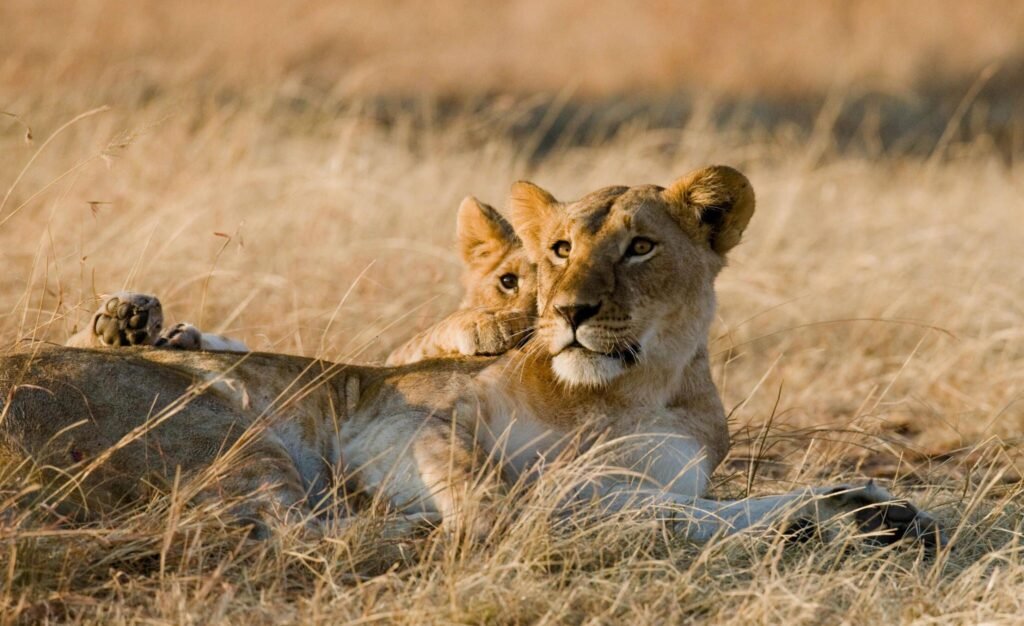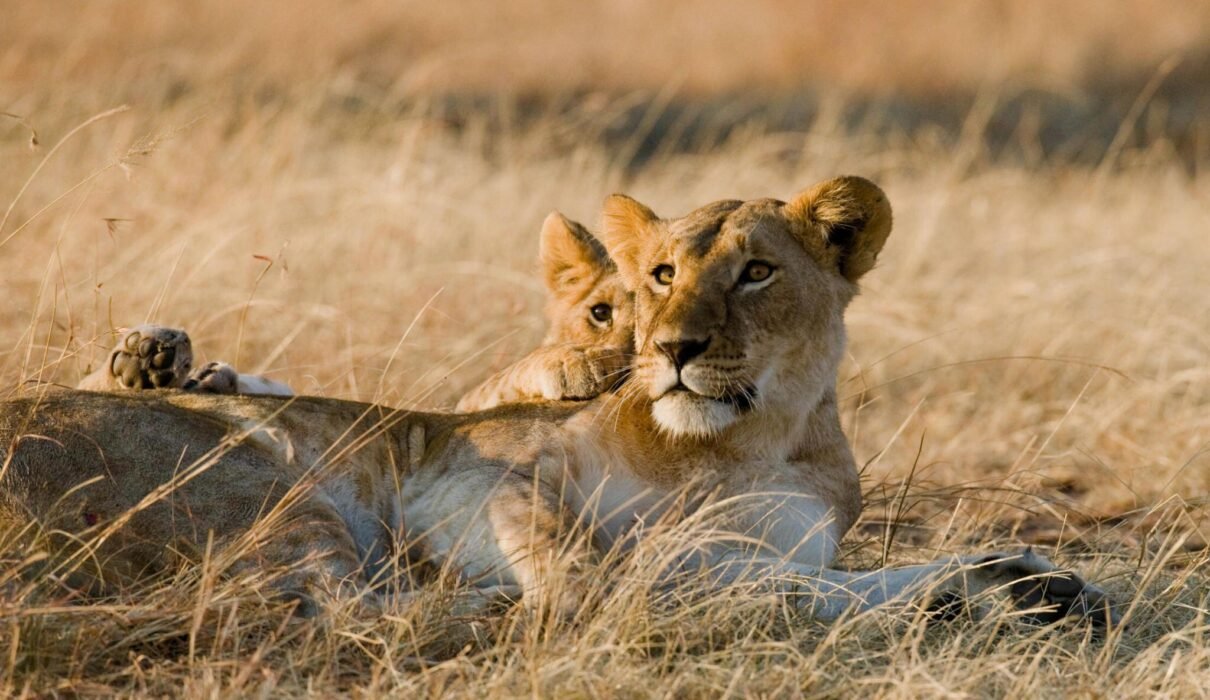Best Time To Visit Serengeti: Are you an avid nature enthusiast longing to witness the untamed beauty of the Serengeti? Look no further! In this comprehensive guide, we will explore the best time to visit Serengeti National Park to maximize your wildlife experience.
With its vast savannahs, majestic wildlife, and awe-inspiring wildebeest migration, Serengeti offers an unparalleled adventure for nature lovers and wildlife photographers alike. So grab your safari hat and let’s embark on an unforgettable journey through this magnificent African gem.

The Splendor of Serengeti
Before we dive into the ideal time to visit Serengeti, let’s take a moment to appreciate the sheer magnificence of this national park. Spanning over 14,750 square kilometers, Serengeti is Tanzania’s crown jewel, captivating visitors with its breathtaking landscapes and diverse wildlife.
From the iconic “Big Five” (lion, leopard, elephant, rhinoceros, and Cape buffalo) to cheetahs, giraffes, zebras, and an abundance of bird species, Serengeti is a haven for wildlife enthusiasts and photographers.
Best Time To Visit Serengeti
Undoubtedly, choosing the best time to visit Serengeti is crucial to ensure a remarkable experience. The park’s climate and wildlife movements vary throughout the year, offering unique opportunities during different seasons.
Let’s explore the four distinct seasons in Serengeti and uncover the best time to witness nature’s grandeur.
Around January to February is a fantastic time to be in the Ndutu area for the wildebeest calving. June and July is the best time to be in the Western Corridor, and around September the migration is in the north where you might be able to see the famous Mara River crossings.
1. Dry Season (June to October)
The dry season, spanning from June to October, is widely considered the best time to visit Serengeti. During this period, the weather remains pleasant, with clear skies and low humidity. These favorable conditions provide excellent visibility for wildlife sightings and photography. Additionally, the lack of rainfall forces animals to gather around permanent water sources, creating remarkable concentrations of wildlife near rivers and watering holes.
2. Wet Season (November to May)
While the wet season may deter some visitors, it presents its own unique charm and benefits. From November to May, the Serengeti receives intermittent rainfall, transforming the landscape into a lush, green paradise. The vegetation flourishes, attracting large herds of herbivores, which, in turn, draw in their predators. Witnessing the circle of life unfold amidst this vibrant ecosystem is a truly awe-inspiring experience.
a. November to December: Short Rains
The short rains, usually occurring in November and December, mark the beginning of the wet season. During this period, the park bursts into life as the rain revitalizes the vegetation. It’s a prime time to witness the wildebeest migration’s southern movement, as they navigate their way from the northern Serengeti to the southern plains.
b. January to February: Calving Season
The wet season continues into January and February, coinciding with the calving season in Serengeti. This magical time sees the birth of thousands of wildebeest calves, attracting predators like lions and hyenas. The dramatic predator-prey interactions provide a front-row seat to nature’s raw power and resilience.
c. March to May: Long Rains
The long rains, occurring from March to May, mark the peak of the wet season. While the rainfall intensifies during this period, it’s worth mentioning that it rarely rains all day, providing ample opportunities for wildlife exploration between showers. The lush landscapes and vibrant colors make this a paradise for photographers, capturing the Serengeti’s beauty in its prime.High Season Most of the year – July to March (The Serengeti will be crowded around the Seronera area)
- Low Season April and May (Lower rated may apply)
- Best Weather June to October (Little to no rainfall)
- Worst Weather March and April (Peak of Wet season)
Frequently Asked Questions about Best Time To Visit Serengeti
When is the wildebeest migration in Serengeti?
The wildebeest migration in Serengeti is a spectacular natural event that occurs throughout the year. However, the exact timing of the migration can vary due to weather patterns. The migration typically follows a circular pattern, with the wildebeest herds moving from the southern plains to the northern Serengeti and back. The best time to witness the wildebeest migration is generally during the dry season, from June to October, when the herds congregate near the Mara River for dramatic river crossings.
Best Time To Visit Serengeti: Are there any risks associated with visiting Serengeti during the wet season?
While visiting Serengeti during the wet season can offer a unique experience, it’s essential to consider a few factors. The rain can make some roads impassable, limiting accessibility to certain areas of the park. Additionally, the increased vegetation might make wildlife sightings a bit more challenging. However, the lush landscapes and the opportunity to witness the circle of life with newborn animals can outweigh these factors for many visitors.
Best Time To Visit Serengeti: What kind of weather can I expect in Serengeti during the dry season?
The dry season in Serengeti, from June to October, is characterized by pleasant weather conditions. Expect clear skies, warm days, and cool nights. The humidity levels are generally low, making it comfortable for wildlife exploration and outdoor activities. However, it’s always a good idea to pack layers as temperatures can vary throughout the day.
Best Time To Visit Serengeti: Can I see the “Big Five” in Serengeti throughout the year?
Yes, Serengeti is home to the iconic “Big Five” – lion, leopard, elephant, rhinoceros, and Cape buffalo. These majestic creatures can be spotted in the park throughout the year. However, wildlife sightings can vary depending on factors like vegetation density and animal movements. The dry season offers better visibility and concentrations of wildlife near water sources, increasing your chances of encountering these magnificent animals.
Best Time To Visit Serengeti: Are there any specific bird species that can be seen in Serengeti?
Yes, Serengeti is a bird lover’s paradise, hosting over 500 bird species. From colorful sunbirds and elegant raptors to impressive ostriches and sociable weavers, the park boasts a diverse avian population. The wet season, particularly from November to May, is an excellent time for bird enthusiasts as many migratory bird species visit the park during this period.
Best Time To Visit Serengeti: What should I pack for a visit to Serengeti?
When packing for your Serengeti adventure, it’s important to consider the weather and activities. Some essential items include lightweight and breathable clothing, a hat, sunscreen, insect repellent, comfortable walking shoes, a good camera with zoom capabilities, binoculars, and a reusable water bottle. It’s also advisable to bring a small backpack to carry your belongings during game drives and nature walks.

